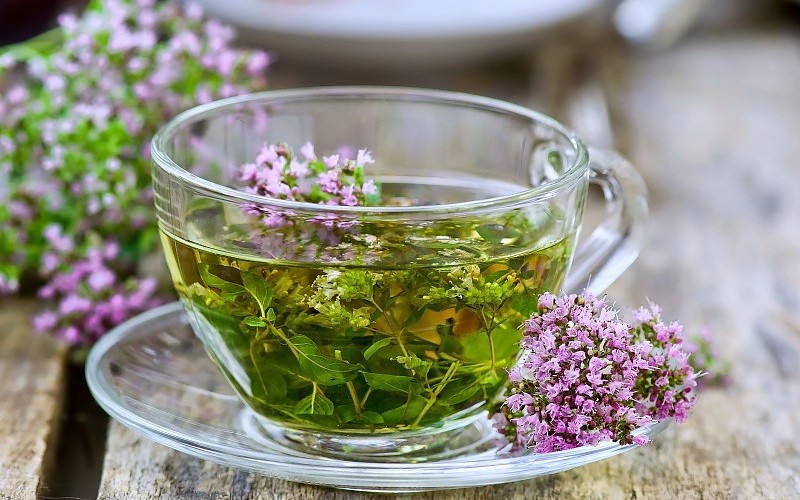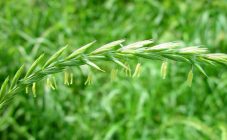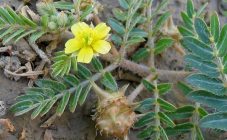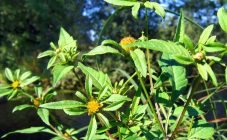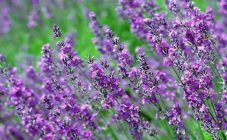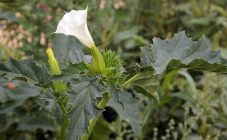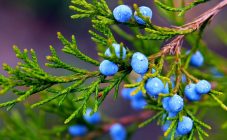Content:
The herb thyme (thyme) is rather low, about 35 cm high. It grows in southern Europe, the Mediterranean, Albania, France, Hungary and many other countries, even in Greenland. In Turkey, common thyme is known as kekkik. In Spain, it comes to retail outlets as tomillo.
Description of the herb
Thyme herb is a representative of the Yasnotkov family, one of its largest genera. Aromatic shrubs and semi-shrubs are considered essential oil plants, as they contain carvacrol, thymol.
Not everyone knows what thyme herb looks like. The main stem of the plant is creeping, strongly branched, covered with small hairs. The flowering twigs, with elongated leaves located on them, rise slightly. The length of the leaflets is different, they are rough, slightly leathery, no more than 1 cm. In the Far Eastern species, the edges of the leaves are serrated. Contains essential oil. Flowers of white-pink and purple shades begin to bloom in the last decade of May and finish blooming in September. Taproot, woody. Fruits in the form of boxes with four brown nuts.
Varieties and varieties of thyme
More than 170 species of thyme grow on the territory of the CIS. This largely useful ground cover grass is grown in the Krasnodar region. Although its habitats are very diverse:
- flea thyme - on the edges and forest glades;
- small-leaved thyme is easily found in mountain tundra;
- Kyrgyz thyme, as well as Pallas, grows in sandy or clayey steppes;
- thyme Ural, Crimean, Siberian prefers rocky slopes, all kinds of rocks.
The most widespread is creeping thyme - Bogorodskaya grass. Dorfler's thyme grows on the Balkan Peninsula, practically does not tolerate frost. Subarctic thyme has a very strong odor. A hybrid of the Lemon-smelling plant requires a mandatory shelter for the entire winter.
In home gardens, plants grow quite quickly and completely cover the ground. The intensity of the illumination does not really matter, thyme grass grows successfully both in open sunny areas and in the shade.
Reproduction
Thyme is easily propagated by seeds. Loose, non-acidic soils are suitable for him. The increased acidity of the soil has a negative effect on the plant, impairs growth and physical properties. Liming is used to reduce acidity.
Sowing seeds in a seedless way is done as follows:
- Preparing the soil in the fall - dig up, remove the roots of the weeds.
- Add prepared compost, rotted manure. For the rapid development of future seedlings, it is imperative to add phosphorus-potassium fertilizers.
- In the spring, in the second half of April, dig up the site again, loosen it, add urea.
- Let the soil settle a little, sow seeds in rows after a day or two, keeping a distance of at least 40 cm between them.
- Sprinkle on top with a centimeter layer of sand, cover the bed with garden film.
When the seedlings sprout, and this will take about two weeks, they will need to be thinned out, left between the plants about 30 cm.If you carefully remove the excess seedlings from the soil without damaging their delicate roots, then they can be transplanted to another place. Strong plants will surely take root after a while, but it is also better to cover them up again.
Using the seedling method, you can start sowing seeds much earlier, in mid-March. Sowed into boxes or other containers. Be sure to sprinkle with calcined river sand. Planting 70-day-old seedlings in the ground is performed according to the same scheme as for the non-seedling method.
Culture properties
The entire ground part of the plant, collected during the flowering period, is used in cooking as a spice. Fresh thyme is an excellent flavoring agent for meat, chicken and mushroom broths. It is added to many vegetarian dishes, used to prepare preparations for the winter.
Thyme helps to reduce itching. Herbal infusion (5 tablespoons per 1 glass of boiling water) drink 1 tbsp. spoon 3 times a day as an antiallergic agent. However, in order not to harm your health, it is necessary to consult a doctor about the appropriateness of use. There is a whole list of contraindications, they must be taken into account and not treated independently: various diseases of the kidneys and liver, breastfeeding, individual intolerance, age less than 12 years.
Before buying a herb in a pharmacy, you need to read the instructions. A weaker medicinal infusion is used externally, for all sorts of baths and lotions. It is very helpful for problematic or oily skin.
Diseases and pests
Thyme contains a lot of fragrant substances, so it is practically not susceptible to diseases and pests. If the plant is grown incorrectly, then it may suffer from:
- meadow moth;
- sandy linger;
- aphids;
- weevil.
Insecticides are used against the meadow moth and aphids, and they are fought with the sandy slug and weevil with the help of poisoned baits.
Of the diseases, thyme is afraid only of fungal diseases that appear with improper care.
Collection and storage of thyme
Thyme sprigs are harvested before flowering, tender shoots are dried in the air in the shade or in special dryers with installed ventilation. The resulting material is threshed and sieved, getting rid of the coarse parts of the stem. Store in tightly closed paper bags or sealed glass containers.
The benefits of thyme for both women and men are obvious - the plant can help heal the skin and hair, and improve the condition for colds. When prescribing treatment for more serious diseases, a doctor will have a chance not to use strong chemicals, but to do it in a milder and less harmless way. In addition, by growing several varieties of thyme on your site, you can discover new aromas and tastes of drinks, meat and vegetarian dishes.


